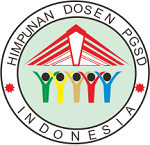TIME OF TODAY
| SINTA ACCREDITATION |
> SK Akreditasi Terbaru 2025 <
| ARTICLE TEMPLATE |
| SUPERVISED JOURNAL |
| RECOMMENDED TOOLS |
| INDEXING JOURNAL |
| JOURNAL VISITOR |
| IN COLABORATION WITH |

> Journal Collaboration Link <
| P-ISSN : 2548-883X |
| E-ISSN : 2548-883X |
| CONTACT US |
























